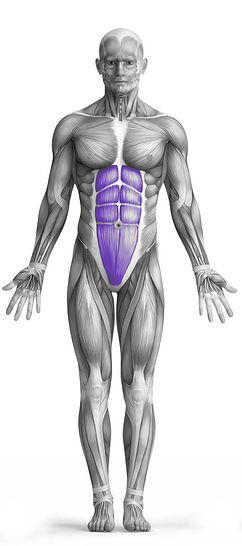Sit Up 101 Video Tutorial
0

Exercise Synopsis
Target Muscle Group
Abs
Secondary Targets
None
Execution
Isolation
Force Type
Pull (Bilateral)
Required Equipment
Bodyweight
Fitness Level
Beginner
Variations
None
Alternatives
None
Timer
Hour
Minute
Second
Stopwatch
00:00:00:00
Overview
The Sit Up is a bodyweight exercise that primarily targets the abdominal muscles, helping to strengthen and tone the core. It involves lying on your back with your knees bent and feet flat on the floor, then lifting your torso towards your thighs while keeping your hands either behind your head or crossed over your chest. This movement engages the abs as the primary muscle group, offering an effective way to build core strength. Sit-ups require no equipment, making them accessible and easy to perform anywhere.
How to Perform
Start by lying flat on your back with your knees bent and feet firmly planted on the floor. Place your hands across your chest or lightly behind your head.
Inhale deeply and as you exhale, engage your abdominal muscles to lift your upper body towards your thighs. Keep the movement controlled and avoid using momentum.
Once your torso reaches a vertical position, pause for a moment, then slowly lower your upper body back down to the floor, returning to the starting position.
Repeat the movement for the designated number of repetitions, maintaining a steady pace and focusing on proper form throughout.
★ Bonus: For exercises that involve external weights (such as dumbbells, barbells, or machines), the One Rep Max (1RM) calculator can help you estimate your maximum lifting capacity. Use it to track your strength progress and adjust your training for optimal results.
Tips
As you exhale forcefully, imagine you're blowing out candles, focusing on tightening your abs and holding the contraction briefly to enhance the mind-muscle connection.
If you experience discomfort in your lower back, it's a sign to switch to exercises that focus more on anti-extension and anti-rotation movements for better spinal support.
Refrain from placing your hands behind your head during the exercise, as this can place unnecessary strain on your neck, leading to potential discomfort or injury.
How Not to Perform
Avoid Using Momentum: Don’t rely on swinging or jerking your body to perform the movement. This wastes energy and shifts focus away from the target muscle (abs). Instead, engage your core and lift your upper body slowly and with control.
Don’t Overextend Your Neck: Avoid pulling on your neck or head with your hands. This can lead to strain and discomfort. Keep your hands lightly across your chest or behind your head without using them to pull yourself up.
Don’t Arch Your Back: Ensure your lower back stays pressed against the floor. Overarching your back can cause strain on the spine. Focus on engaging your core throughout the movement to protect your lower back.
Avoid Fast, Shallow Movements: Don’t rush through the exercise with shallow motions. Make sure your torso comes up all the way until it’s almost perpendicular to the floor. Performing shallow sit-ups reduces the effectiveness and doesn’t fully engage the abs.
Don’t Hold Your Breath: Breathe steadily throughout the movement. Holding your breath can increase internal pressure and cause unnecessary tension. Exhale as you lift your torso and inhale as you return to the starting position.
Don’t Let Your Feet Lift Off the Floor: Keep your feet flat on the floor and avoid using them for leverage. If your feet start lifting, it means you're not fully engaging your core, and your energy is being wasted in the wrong areas.
Don’t Rush Repetitions: Avoid speeding through the set. Performing sit-ups too quickly can reduce their effectiveness. Instead, focus on a controlled, steady pace that keeps the tension on your abs for the entire range of motion.
Avoid Overdoing It: Performing too many sit-ups in one set can lead to fatigue and improper form. Start with a manageable number of repetitions and gradually increase as your strength improves.
Variations
Variations of fitness exercises refer to different ways of performing a specific exercise or movement to target various muscle groups, intensities, or goals. These variations aim to challenge the body differently, prevent plateaus, and cater to individuals with varying fitness levels.
Alternatives
Alternative exercises in fitness refer to different movements or activities that target similar muscle groups or serve the same training purpose as the primary exercise. These alternative exercises can be used as substitutes when the original exercise is unavailable or challenging to perform due to various reasons such as equipment limitations, injuries, or personal preferences.








